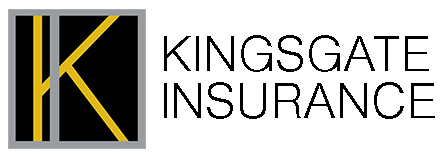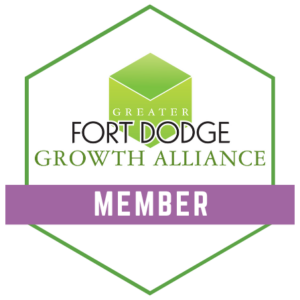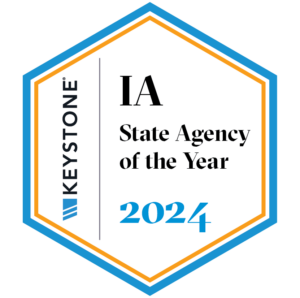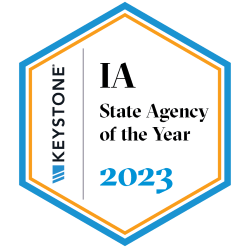Price
When looking at price there are all sorts of factors to consider when it comes to what actually makes up and determines the cost of your insurance. Now keep in mind that each person who needs insurance is their own unique person or individual. So a quote for you won’t be the same or identical to your neighbor because of the specific factors we are going to discuss with you.
It’s our job to educate you and give you an understanding of what drives the price of insurance.
Coverage A Limit on Homeowners Policy
The main rating basis (i.e. what drives the premium on a homeowners policy) is the coverage limit of the house. Often it is asked, how is the coverage limit determined? It’s determined by a replacement cost estimator – this is software that compiles national data from contractors to determine what it would likely cost to reconstruct the insured home based on the current square footage and features. This is NOT market value, that is often a confusing point for insureds – they think “why do I need to insure my home for $350,000 when I could only sell it for $200,000?” The response to that is, what would your home be worth after a tornado hit it? Not much, clearly. Therefore, we recommend (and quote) replacement cost coverage 95% of the time, because you need a coverage limit adequate to rebuild your home in the event it is completely destroyed. The replacement cost limit of coverage is the single largest factor in determining the premium of your insurance policy. If one policy is using a $350,000 dwelling coverage limit, while another policy is using a $250,000 coverage limit, it’s highly probable that the policy using the $250,000 limit will be substantially less premium. However appealing less premium may be, keep in mind you may not be adequately covered in the way you expect.
Rising Costs of Construction
Homeowners insurance policies have traditionally used a policy feature called an “Inflation Guard” to slowly increase the limit of coverage for your dwelling over time. In 1975, the average cost to build a new home was $28,970, today it’s more than 10X that. If the policy isn’t increasing the coverage limit over time, it will slowly fall way behind the cost to repair/replace a home if a major loss occurs. This is more relevant today than ever before, after seeing the price of building materials explode over the course of the last 12-18 months. It’s safe to say that a 4% bump would not have kept pace with construction costs since the COVID shutdown occurred. Will construction costs continue to escalate? We don’t have a crystal ball, so we can’t say for sure, but we do know that evaluating your coverage limit is especially important in this environment.
Endorsements or Enhancements
Many of our carriers allow you to use policy endorsements or enhancements to squeeze out some extra coverage/flexibility on their homeowner’s insurance. This can come from a few different endorsements that we always recommend:
- Blanket Insurance Coverage – This is the best of the three options in our opinion. This allows an insured to combine their property insurance coverage limits, and in a loss, gives them flexibility in how to use the limits. A standard insurance policy has multiple property coverages: Coverage A (Dwelling), Coverage B (Other Structures), Coverage C (Personal Property), and Coverage D (Loss of Use). On a normal policy, unendorsed, you will have a fixed limit for each of those coverages – but what if you can live with your parents after a claim hits and don’t need the loss of use? That limit goes to waste. As an example – a West Bend policy may have a Coverage A limit of $257,500 – but because West Bend blankets all limits together, the blanket property limit is $644,000, allowing one to be more flexible with the limit in the event of a major loss.
- Guaranteed Replacement Cost Coverage A – If you can’t get blanket coverage, another great endorsement is Guaranteed Replacement Cost (GRC). This endorsement basically says, if you insured your home to appropriate value, the carrier will remove the coverage limit at the time of loss and replace your home for like kind and quality at current prices. In other words, when COVID hit and prices spiked 40%, the carrier paid above the limit of insurance.
- Extended Replacement Cost – If neither of the above two are available, Extended Replacement Cost provides a flat percentage bump above the Coverage A limit – 125% and 150% are very common. This gives you a 25%/50% buffer above the coverage limit in the event prices increase considerably beyond the insureds control.
Causes of Loss
Insurance policies only pay for claims when there is a loss, but how does an insured know what qualifies as a loss? There is a specific part of the policy that tells an insured what are “Causes of Loss” or also known as a “Peril”. Every insurance policy has exclusions on it, they also define what is covered, and that is on either Basic, Broad, or Special Form coverages. Basic & Broad are known as “Named Peril” policies – if coverage is listed, you have coverage. If it’s not listed, you have no coverage. Special Form coverage is a much better option – it’s referred to as an “Open Peril” policy – this means everything is covered, UNLESS it’s specifically excluded. See the below document that will give you a better visualization of the differences.
Wind/Hail Deductibles
Some carriers are pushing higher deductibles for wind/hail losses due to the increase in catastrophic weather patterns we have seen in the Midwest throughout the recent years. The higher a deductible on a homeowners policy, the lower the premium. Insureds should make sure that they’re reviewing two quotes with similar deductibles to ensure they are comparing apples-to-apples.
Loss Settlement
There are two main types of loss settlement: Replacement Cost and Actual Cash Value. As previously mentioned, 95% of our policies will be written on a Replacement Cost basis – this means we’re insuring the property to repair/replace it in the event a covered loss occurs (going back to our replacement cost estimate). The other way to insure property that is common and accepted would be Actual Cash Value. Replacement Cost is great because it’s objective – get a quote from a contractor and you know what it costs to replace/repair something. In the case of Actual Cash Value, we’re insuring what we believe the “depreciated value” of the property is. This is a subjective number and can make claim situations challenging, however, it can be useful when an insured wants SOME coverage but would not intend to repair/replace the property being insured.
Protection Class & Protective Devices
How far a home is from a fire department has a significant impact on premium due to a higher likelihood of more fire damage should a fire start. Carriers also give back discounts if a home has protective devices installed to alert insureds of differing kinds of damage (Low Temp Freeze Alarms, Fire Alarms, and Burglary Alarms to name a few) – ideally these devices are centrally monitored.
Auto Liability Limits
A personal auto policy has a few different important coverage buckets. We’ll focus on the auto liability limit here and circle back to Uninsured/Underinsured Coverage later. Basic auto liability is required by every state for anyone driving a car to protect other drivers in the event that someone causes damage to another driver’s vehicle. This coverage can be configured in a couple different ways – combined single limit (CSL), which provides a single limit of liability for all bodily injury or property damage, or Split Limits – specific limits of liability for bodily injury per person, bodily injury per accident, and a property damage limit per accident. Combined Single Limit is a more flexible coverage option than Split Limits. For example, the State of Iowa has a minimum liability requirement of $20,000 bodily injury per person, $40,000 bodily injury per accident, and $15,000 of property damage per accident. Iowa state minimum insurance requirements are severely low, which is why Uninsured/Underinsured coverage is important. If you have an auto policy with state minimum split limits vs. a policy with $1M CSL, it’s going to make a massive difference in price. For example, if someone has $100K/$300K/$100K split limits, and they cause significant damage to a newer Jeep Grand Wagoneer with a MSRP value of $106,000, their property damage limit is lower than the cost to fix/replace the damaged vehicle. In this case, the individual causing the damage can be held personally liable to repay the party they caused damage to. Same goes for a bodily injury claim. In terms of evaluating an insurance product, it’s important to make sure one understands the difference policy limits play in driving their premium and what they need to have for coverage.
Youthful Drivers
Insureds are often surprised to find out that when their 14—15-year-old gets their school permit (i.e. they can drive alone), their insurance company sends them a letter letting them know that the child will be added as a driver to their policy. This can cause a substantial increase in premium. Many carriers handle youthful drivers differently, understanding how they do so can make a big impact on price (some rate all vehicles, some only rate for the youthful driver’s vehicle).
Credit Scores, Claims, & Driving Violations
All three of these items affect insurance rates in different ways. Insurance companies run an “Insurance Score” on all applicants – it isn’t a hard hit on credit but a soft pull of an applicant’s credit history. People with lower insurance scores tend to pay higher premiums while people with higher credit scores tend to pay lower premiums. The reasoning for this is, lower insurance scores generally create payment issues that generate costs for the carriers, and statistics show individuals with lower credit scores correlate with higher probability of filing claims. Carriers offer discounts for insureds with a clean home/auto claim history. Driving violations such as speeding, failure to yield/stop, and failure to wear a seatbelt are a few common examples of what can potentially generate additional premium on your auto policy.







